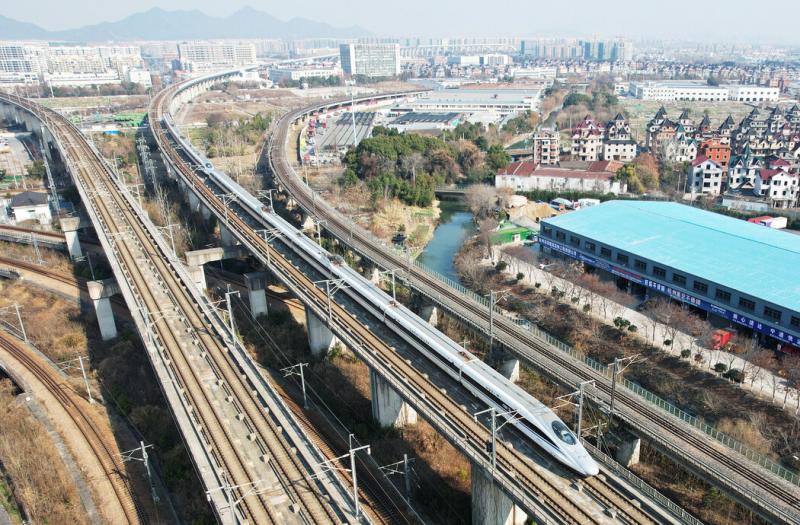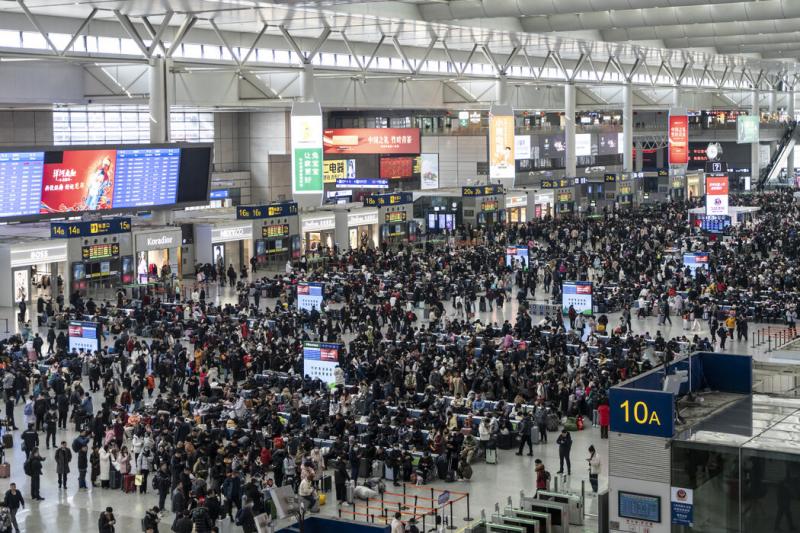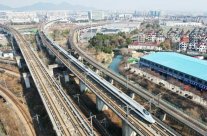
China has rarely increased the fares of four major high -speed rail lines. This is the most extensive measure adopted by China since the construction of the high -speed rail system in the past 20 years ago.
The rise in train ticket prices is part of the rise in public service prices.Earlier this year, water and natural gas expenses in some cities began to rise.
China's public services have received a lot of subsidies from local governments.However, huge municipal debt means that these local governments do not have enough money at hand to reduce the price.
Price increase can curb the losses of some large state -owned enterprises that provide such services.Let consumers pay more fees, and it also helps to offset prices that generally occur with the slowdown in China's economic growth.
Since 2021, China has greatly increased the electricity bills of many factories, although residential users have continued to pay lower subsidy electricity bills.
"Large factories should now pay at a market price," said David Fishman, a senior manager of Singapore Electric Power Consulting Company in Shanghai.
In China, raising railway fares is a tricky issue.High -speed rail is a symbol of China's infrastructure capabilities, and it is often started to build before consumers need.However, the construction of these infrastructure requires huge amounts of loans. The Chinese Railway Group, a state -owned enterprise China Railway Group, which operates the railway network alone, is as high as 6.13 trillion yuan.
The Ministry of Finance has ordered more than a dozen provinces with the most liabilities in China to reduce infrastructure expenditure this year in exchange for debt reduction.Chinese leadership is shifting the national growth strategy from infrastructure and real estate investment to high -tech manufacturing and exports.But this has caused sanctions from the United States and Europe. They worry that the additional exports of China may lead to unemployment and destroy their industrial foundation.
Since 2008, China has opened a high -speed rail line of 45,000 kilometers, connecting each large city and hundreds of small towns.In terms of scale, the length of this system is enough to span more than 10 times from New York to Los Angeles.The first line was opened before the Beijing Summer Olympics.
The operation speed of the Chinese high -speed rail is usually 300 kilometers to 380 kilometers per hour, depending on the line.Due to the straight track, the train can run long distances without deceleration.
But the Chinese Railway Group Corporation is not only for the construction of a high -speed rail network.Many high -speed rail lines in China are owned by provincial and municipal governments. These joint ventures have helped pay construction costs, but the ability to subsidize transportation is becoming weaker and weaker.
Some old routes start to maintain more.These lines were hurriedly built during the global financial crisis, with the purpose of hiring hundreds of thousands of workers who were unemployed due to temporary shutdown of export factories.
In a statement issued to the official Xinhua News Agency, the railway system explained the reasons for the increase in fares this month, saying that "line maintenance, vehicle purchase, equipment renewal, labor employment and other operating costs have changed significantly."
The increase in fares has caused a lot of comments on Chinese social media.Most of them are negative, because wages have stagnated in the past few years, and real estate prices have plummeted.
"Everything rises, and the salary has not risen," a person complained.
Hangzhou to Shanghai, Changsha, Ningbo, and Wuhan to Guangzhou's peak line fare will all rise.Many cities are located near the Yangtze River and its tributaries in the Central Ministry of China. They are quite rich areas.But rising prices will also affect passengers in cities with smaller and less prosperity in the middle.
In addition to the small increase in the line between Hangzhou and Changsha, the first -class and second -class fare of the peak hours will rise by nearly 20%.The fare of luxury VIP business seats will rise by 39%. This seat uses a flat -lying seat similar to the intercontinental route business class.
The railway system said in a statement to Xinhua News Agency that raising the fare of the peak will make some non -peak tickets and more slow trains from stopping.
The rise in fares has attracted public attention because the increase is particularly large.At the end of 2020, the railway system increased the second -class fare of Beijing from Beijing to Shanghai, the largest passenger flow, and increased by 10%after a year.
China's high -speed rail is still cheaper than the West."In the final analysis, the Chinese railway is still cheaper than the European, Japan and the United States," said David Feng (Yin), an international railway transportation expert.

After the fare rises, the highest fare from the second -class high -speed rail from Wuhan to Guangzhou will soon reach 553 yuan. The journey of nearly 1,000 kilometers will take less than four hours.The first -class fare is 885 yuan. Like the economy class of the American train, there are two seats on both sides of the aisle, but the leg extension is even greater.The flat seat fare of the business seat is 1935 yuan.
When the system is opened, many people in the West predict that those tall and wide stations may never be filled.Today, railways serving some small cities are rarely used, especially in places where economic growth is stagnant or worse.But in Shanghai and other cities in China, the high -speed rail is very popular.
The railway stations in these cities have become crowded, especially during the festive period like the last five -day holiday.The departure hall of Shanghai Hongqiao Station is as long as three olive fields. Two days after the holidays are still crowded.
Beijing and Shanghai's platforms were originally built for 16 trains, and are now replaced with 17 or 18 cars.Train running frequently -more than 80 trains travel between Beijing and Shanghai every day.
However, hundreds of small cities and towns have built large stations, even if there are only one train every day.China National Railway Corporation invested 765.4 billion yuan to further expand last year, most of which were used to connect to remote areas.However, the company's operating profit reported was only 3.3 billion yuan, and there was almost no money to repay debts.
New towns and cities develop along the high -speed railway.Many blocks around each station are classified as high -rise buildings, which means that a large number of people live nearby and use high -speed rail.Many Chinese people even take high -speed rail every week or every day, and work from low -cost cities and towns with a monthly rent of less than 700 yuan to work in large cities with higher living costs.



